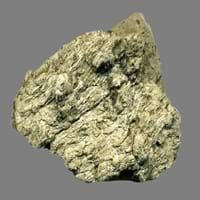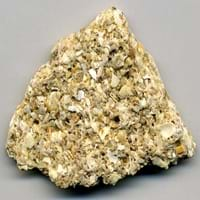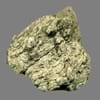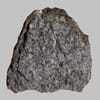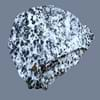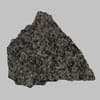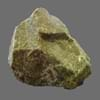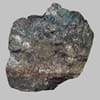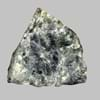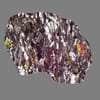Dacite and Coquina
Definition
Definition
Dacite is a volcanic igneous rock which is rintermediate in composition between andesite and rhyolite
Coquina is a sedimentary rock that is composed either wholly or almost entirely of the transported, abraded, and mechanically-sorted fragments of the shells of molluscs, trilobites, brachiopods, or other invertebrates
History
Origin
Romania and Moldova, Europe
European Foreland Basins
Discoverer
Unknown
Unknown
Etymology
From Dacia, a province of the Roman Empire which lay between the Danube River and Carpathian Mountains where the rock was first described
From Concha (Latin)+ Coquina(Spanish) +conch(English)= Couquina (mid 19th century)
Class
Igneous Rocks
Sedimentary Rocks
Sub-Class
Durable Rock, Soft Rock
Durable Rock, Soft Rock
Family
Group
Volcanic
Not Applicable
Other Categories
Fine Grained Rock, Medium Grained Rock, Opaque Rock
Coarse Grained Rock, Opaque Rock
Texture
Texture
Aphanitic to Porphyritic
Clastic
Color
Bluish - Grey, Brown, Grey, Light to Dark Grey
Beige, Buff, Orange
Maintenance
Less
More
Durability
Durable
Non-Durable
Water Resistant
No
No
Scratch Resistant
No
No
Stain Resistant
No
No
Wind Resistant
No
No
Acid Resistant
No
No
Appearance
Vesicular
Layered, Banded, Veined and Shiny
Uses
Architecture
Interior Uses
Decorative Aggregates, Entryways, Interior Decoration
Decorative Aggregates, Homes, Hotels, Interior Decoration
Exterior Uses
As Building Stone, Paving Stone, Garden Decoration
Garden Decoration, Office Buildings
Other Architectural Uses
Curbing
Curbing
Industry
Construction Industry
As Dimension Stone, Construction Aggregate, for Road Aggregate, Landscaping
Building houses or walls, Construction Aggregate
Medical Industry
Not Yet Used
Not Yet Used
Antiquity Uses
Artifacts
Artifacts, Monuments, Sculpture, Small Figurines
Other Uses
Commercial Uses
Commemorative Tablets, Creating Artwork
Creating Artwork
Types
Types
Footwall Dacite, Hanging wall Dacite, Tuff and Biotite Dacite
Not Available
Features
Host Rock for Lead, Is one of the oldest rock
Available in Lots of Colors and Patterns, Is one of the oldest rock
Archaeological Significance
Monuments
Not Yet Used
Used
Famous Monuments
Not Applicable
Data Not Available
Sculpture
Not Yet Used
Used
Famous Sculptures
Not Applicable
Data Not Available
Pictographs
Used
Used
Petroglyphs
Used
Used
Figurines
Not Yet Used
Used
Fossils
Absent
Present
Formation
Formation
Dacitic magma is formed by the subduction of young oceanic crust under a thick felsic continental plate. Further, the Oceanic crust is hydrothermally altered as quartz and sodium are added.
Coquina is a sedimentary rock which is formed when billions of small clam-like seashell, called Coquina, or cockleshell are die and hence are deposited, buried and turns into a rock when pressure is applied.
Composition
Mineral Content
Amphibole, Apatite, Biotite, Feldspar, Garnet, Hornblade, Magnetite, Plagioclase, Pyroxene, Quartz, Zircon
Apatite, Augite, Bronzite, Calcite, Chert, Chlorite, Clay Minerals, Epidote, Feldspar, Garnet, Micas, Muscovite or Illite
Compound Content
Ca, Fe, Potassium Oxide, Mg, Potassium, Silicon Dioxide
CaO, Carbon Dioxide, Iron(III) Oxide, MgO
Transformation
Metamorphism
Yes
No
Types of Metamorphism
Burial Metamorphism, Cataclastic Metamorphism
Not Applicable
Weathering
Yes
Yes
Types of Weathering
Biological Weathering, Chemical Weathering, Mechanical Weathering
Biological Weathering, Chemical Weathering, Mechanical Weathering
Erosion
Yes
Yes
Types of Erosion
Chemical Erosion
Coastal Erosion, Sea Erosion, Water Erosion, Wind Erosion
Properties
Physical Properties
Hardness
2-2.25
1-2
Grain Size
Medium to Fine Coarse Grained
Coarse Grained
Fracture
Conchoidal
Irregular
Streak
White
White
Porosity
Less Porous
Highly Porous
Luster
Subvitreous to Dull
Dull to Vitreous to Submetallic
Cleavage
Perfect
Not Available
Toughness
Not Available
Not Available
Specific Gravity
2.86-2.87
1.10-2.24
Transparency
Translucent
Opaque
Density
2.77-2.771 g/cm3
2.8-2.9 g/cm3
Thermal Properties
Specific Heat Capacity
0.92 kJ/Kg K
10
Not Available
Resistance
Heat Resistant, Impact Resistant, Pressure Resistant, Wear Resistant
Heat Resistant, Impact Resistant, Pressure Resistant, Wear Resistant
Reserves
Deposits in Eastern Continents
Asia
Not Yet Found
Not Yet Found
Africa
Not Yet Found
Not Yet Found
Europe
France, Greece, Romania, Scotland, Spain
United Kingdom
Others
Not Yet Found
Not Yet Found
Deposits in Western Continents
North America
USA
USA
South America
Argentina, Bolivia, Chile, Colombia, Ecuador, Peru, Venezuela
Not Yet Found
Deposits in Oceania Continent
Australia
New Zealand, South Australia, Western Australia
Not Yet Found
All about Dacite and Coquina Properties
Know all about Dacite and Coquina properties here. All properties of rocks are important as they define the type of rock and its application. Dacite belongs to Igneous Rocks while Coquina belongs to Sedimentary Rocks.Texture of Dacite is Aphanitic to Porphyritic whereas that of Coquina is Clastic. Dacite appears Vesicular and Coquina appears Layered, Banded, Veined and Shiny. The luster of Dacite is subvitreous to dull while that of Coquina is dull to vitreous to submetallic. Dacite is available in bluish - grey, brown, grey, light to dark grey colors whereas Coquina is available in beige, buff, orange colors. The commercial uses of Dacite and Coquina are commemorative tablets, creating artwork.
|
||
|
||
|
